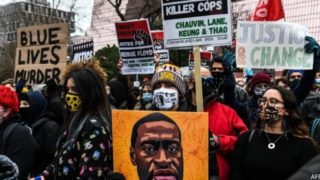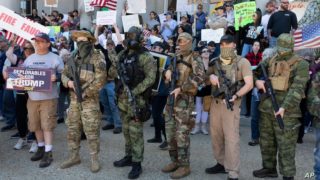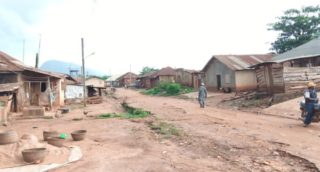CHICAGO – AFTER GEORGE FLOYD died on the ground outside Cup Foods, in Minneapolis, last May, millions of Americans who joined the largest civil-rights demonstrations in the country’s history were in no doubt that he had been murdered. They had watched a horrific video, lasting more than nine minutes, which they believed showed a homicide taking place. They observed how Derek Chauvin, a white police officer, restrained Mr Floyd by kneeling on his neck. They heard how worried bystanders, including a nine-year-old child, said repeatedly the policeman was killing him, and begged for him to relent. Fellow police officers, and others watching events live but remotely, voiced concern. Most powerfully, and desperately, they heard how, handcuffed and prostrate, Mr Floyd himself warned that his life was slipping away. He told Mr Chauvin he could not breathe. Among his dying words were offers of love to his family.
After the three-week trial of Mr Chauvin in Minneapolis, it was still hard to imagine a jury could decide anything other than a murder had taken place that day. Joe Biden, the president, made an unusual comment on April 20th: he said that he was “praying” for the “right verdict”. Though he did not want to influence the jury (which he hoped was sufficiently sequestered not to hear his comments), he said evidence pointing to the verdict, which implied Mr Chauvin’s guilt, was “overwhelming”. For those who watched the awful video, or who followed the evidence shown in the trial, a guilty verdict also looked to be the likeliest outcome even though the jury had to make a decision unanimously. Late in the afternoon, after just one day of deliberations, and having put no questions to the court, the jury did indeed convict Mr Chauvin of both second-degree murder (which implies an unreasonable use of force, but not that he necessarily intended to kill) and third-degree murder (suggesting reckless disregard for life). He was also convicted of manslaughter. He could face a sentence of 40 years in prison.
The prosecution’s case had been straightforward. Much rested on the now-infamous bystander video, on similar footage the police recorded themselves, and on powerful testimony by witnesses, including the nine-year-old. One official, who had been watching events by live video, recalled how she could not understand why Mr Chauvin, flanked eventually by three other police officers, held Mr Floyd immobile for so long, when there was no sign of threat or even resistance from him. She wondered if her video feed had frozen because of the unchanging image on her screen. Even when paramedics arrived and tried to resuscitate Mr Floyd, the police officer looked reluctant to stop applying deadly pressure. A former police chief testified that Mr Chauvin, an officer for 19 years, would have been taught not to use his knee on the neck of a suspect in such a way, and certainly not for so long. His damning conclusion: Mr Chauvin did not behave as he was trained to do.
Added to that was the evidence that accumulated before the trial. The city of Minneapolis, shortly before the court sessions began, said it was paying $27m—a record compensation sum—to Mr Floyd’s family. That naturally suggested an admission that Mr Chauvin had committed an unusually heinous crime. It clearly made things harder for the defence lawyers. Probably more difficult to overcome was the earlier conclusion from the autopsy on Mr Floyd. The examiners ruled that he died not coincidentally from some other cause (such as opioids or other drugs in his body) but clearly as a result of “homicide”.
Dealt such a difficult hand even before the trial began, the defence team then played it poorly. It did fight hard during a prolonged jury selection, but in the trial the lawyers made surprising choices. Despite the police chief’s testimony, they claimed that the defendant merely behaved as any other officer would have done. Oddly, it followed the prosecution in choosing to dwell on the nine-minute video, ensuring the jury spent even more time watching it. It did not put Mr Chauvin forward as a witness—understandable on the assumption that the defendant, in cross-examination, would be forced to explain how he had been the subject of 22 previous complaints or internal investigations.
The paucity of other witnesses was more surprising. Unable to claim that Mr Chauvin used lethal force in self-defence, or as a result of a split-second decision, his lawyers tried to claim that other factors, notably Mr Floyd’s pre-existing health conditions, were in reality the main cause of death. That was hard to do, given the autopsy results. A defence witness, a former medical examiner from Maryland, did suggest the pressure on Mr Floyd’s neck had not been decisive in causing his death and instead he suffered from a heart condition. The jury was evidently not convinced.
What if the jury had acquitted Mr Chauvin of two counts of murder, or found him guilty only of a lesser charge of manslaughter? Politicians across America were braced for an angry backlash. In Minnesota the governor, Tim Walz, called out thousands of troops from the National Guard, as businesses in Minneapolis boarded up their windows and girded for protests—or potentially looting—of the sort seen last summer, in the aftermath of Mr Floyd’s death. Tensions were already unusually high in the city, after the death of another African-American man, Daunte Wright, earlier in April, who was shot by a policewoman. She claimed she had been intending to use a taser, but pulled the trigger on her handgun instead.
Farther afield, other cities were also preparing. Maxine Waters, a progressive congresswoman in California, at the weekend had called on protesters to “stay on the street” and “get more confrontational”, were Mr Chauvin not to be convicted. (Her comment prompted the judge to tell the defence lawyers on April 19th that they might now have cause for an appeal). In Chicago, the scene of a shooting of a Latino teenager on March 29th, there were also warnings of likely protests. Footage recently released showed the killing of Adam Toledo, a 13-year-old boy, who had been chased into an alley by a white policeman at night. He was fatally shot while raising his empty hands and turning, as ordered, to face the policeman. The National Guard were also called out, in preparation, to Chicago.
After the guilty verdicts, is this an opportunity for some healing to begin? It is increasingly common for shootings by police, or other violent acts, now to be captured on video—either on bodycams the police are often obliged to wear and activate, or on bystanders’ phones. In many cities, too, the public release of official footage is obligatory within a short time of a fatal incident. That may give an impression that deadly violence by America’s police is getting more common, but in fact the reverse could, slowly, turn out to be true. Historically it has been incredibly rare for serving police officers to be prosecuted (let alone successfully) for committing murder in the course of their work. By one estimate, in 98% of cases in which police kill someone, nobody is charged with a crime. That may have created a sense of impunity that encouraged officers to behave recklessly with the lives of those people they were supposed to protect. Helping to end that sense of impunity may be the most powerful, and positive, contribution that Mr Chauvin’s conviction will offer.
By The Economist





